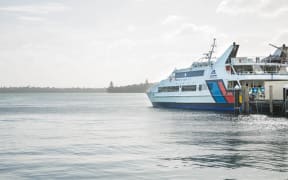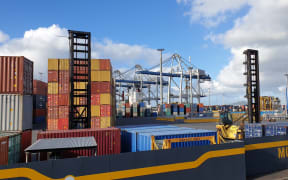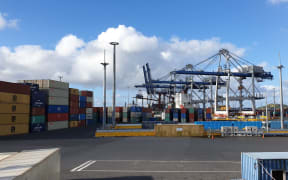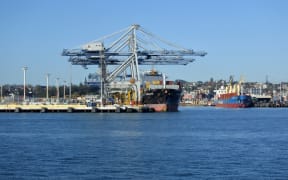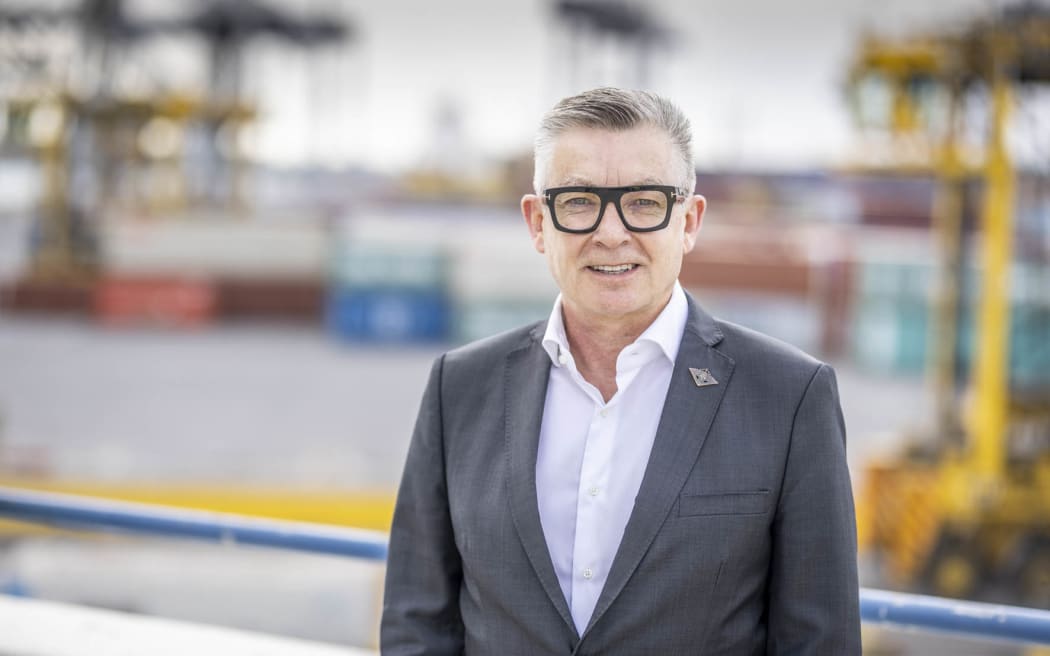
Port of Auckland chief executive Roger Gray Photo: Supplied/ Ports of Auckland
Port of Auckland intends to sell two sites back to the council and plans to seek fast-track approval for two projects.
It comes after mayor Wayne Brown outlined he wanted to turn some port land into a sophisticated waterfront attraction for public use.
Chief executive Roger Gray told Checkpoint they were in negotiations to sell council the smaller Captain Cook and Marsden wharves next to Bledisloe.
He would not put a price tag on them but said they believed together the land was valued to be more than $50 million.
The port has had consent for the demolition of Marsden Wharf since 2012, due to its poor structure, but got in trouble in 2015 when it began the demolition, with the council saying it had no notice.
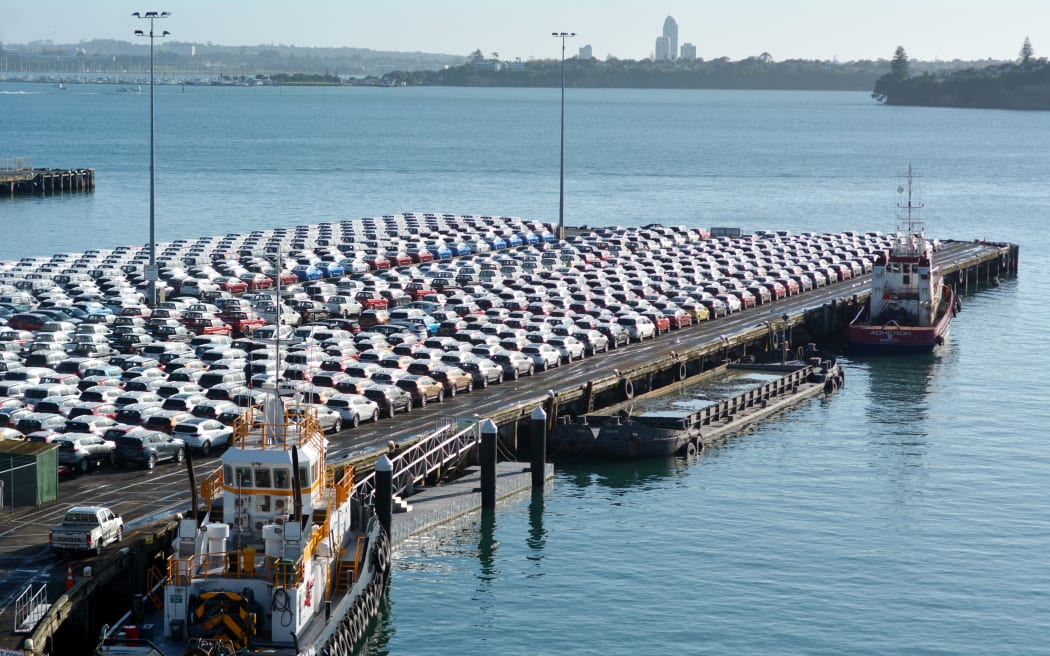
Cars parked on Captain Cook Wharf. Photo: 123RF
New wharf at Bledisloe and fast-track consent
However, that sale would be subject to a condition - the port wants consent and approval to build a wharf along the northern face of Bledisloe where the seawall currently is.
"We want to build a wharf across the front of the seawall which will then have two purposes, one, it will be there for the roll-on and roll-off business to cars ... and during cruise season, we'll tie the large cruise ships along there and remove the very large ones out of the ferry basin," Gray said.
Roll-on roll-off cargo includes cars, trucks and buses from all around the world, which the port said were typically moved off the port site within 48 hours.
Gray said this plan would help ease the problem of ferry delays due to cruise ships arriving or departing.
The ideas were similarly outlined in 2017 as part of the port's 30-year masterplan.
A previous proposal by the port to extend the Bledisloe Wharf was opposed by residents, who said it would ruin views.
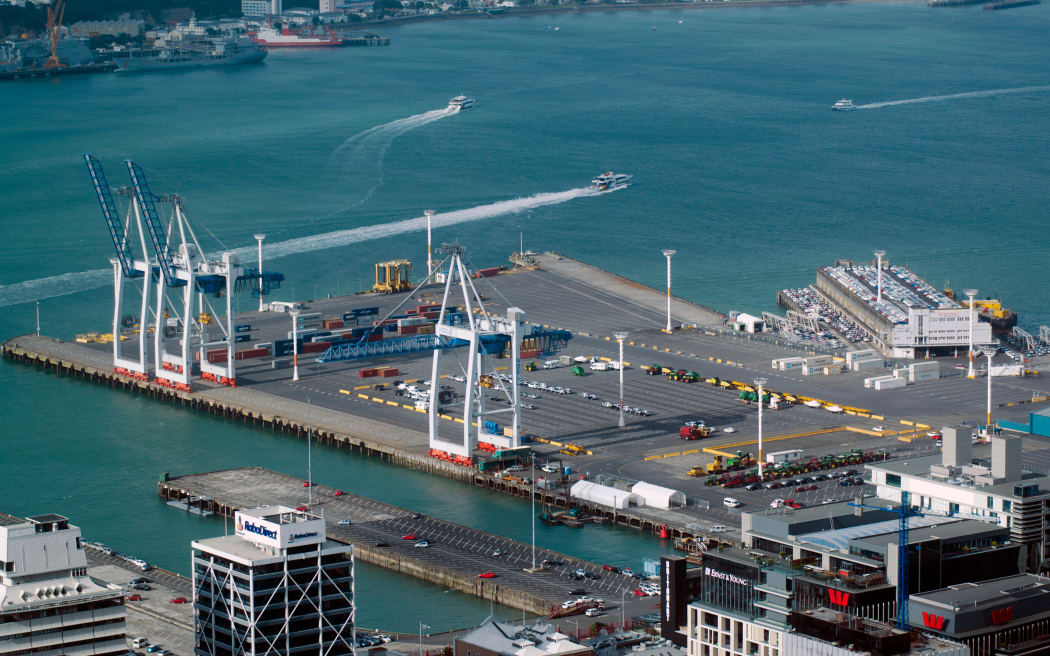
Bledisloe Wharf, pictured in 2013. Photo: Rafael Ben-Ari/Chameleons Eye
But Gray said this project was different, with "limited" dredging and a 13m projection out from the seawall.
"We're proposing that it's a pile and concrete platform wharf so the water would still be lapping up against the seawall where it is right now.
"It's nothing like the previous request which was to go out in excess of 80m, this is literally just book-ending the end of the Bledisloe Precinct and giving us a new wharf."
The port planned to apply for fast-track approval for that project as well as another extension planned for the Fergusson North Wharf.
"I've spoken with minister [Simeon] Brown about our vision for Bledisloe and Fergusson North and future-proofing the wharf and he's pretty supportive of the direction we're taking."
The port also was set to carry out surveys and studies and had started consultation with community groups, including Ngāti Whātua Ōrākei.
Footprint and trucks on roads
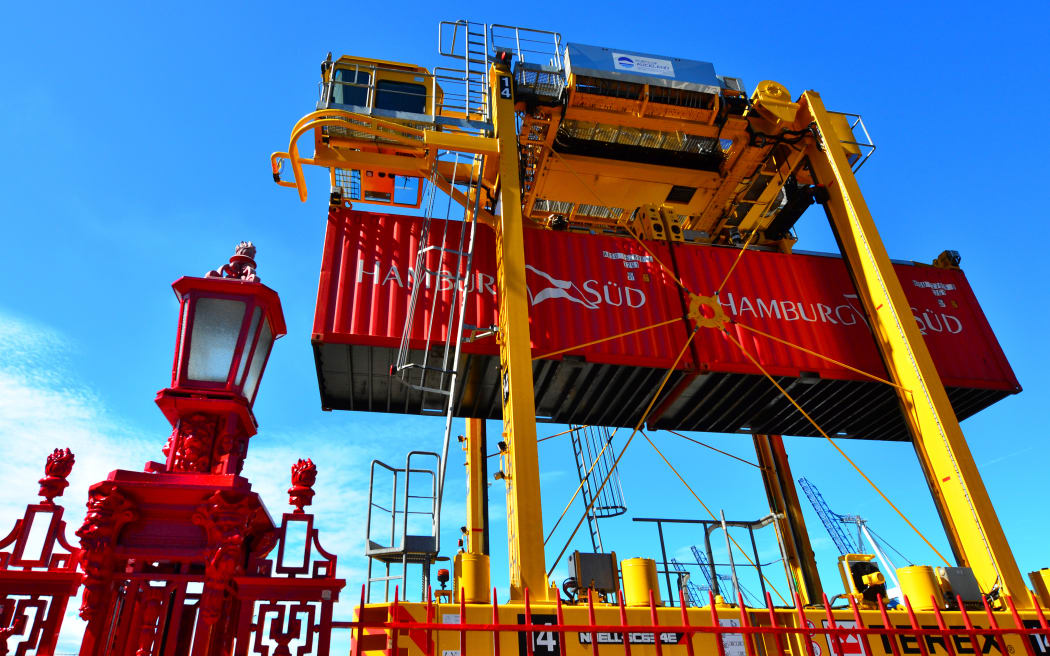
Straddle carriers and containers on Fergusson Wharf at Ports of Auckland. Photo: Rafael Ben-Ari/Chameleons Eye/ 123RF
The port had agreed with to reduce its footprint.
Asked how this would be achieved, Gray said: "We've got plenty of capacity to put volume through the container terminal by going up to four-high operations and I think that we can probably condense the roll-on, roll-off a bit by use of building a second car handling facility like the one that's already on Bledisloe."
As for managing the flow of trucks on roads, which the mayor had complained about, Gray said they were introducing peak hour charges between about 7am and 7pm.
In May, it plans to announce a three-year pricing trajectory of charges.
"Right now it's sitting at about $120 over the next couple of years we'll take that up to over $200 and we'll leave nights cheaper and we'll have rail even cheaper.
"The objective there is to start to push trucks into the back of the clock operations to reduce the congestion and secondly we want to encourage more rail use, but right now cargo owners are electing trucks over rail.
"We're doing that for two reasons, one, to reduce congestion and, two, to also increase the profitability of the ports to the ratepayers because we've got to get a fair return."
